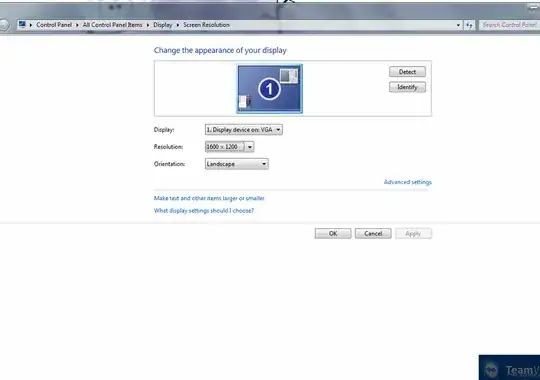I've recently upgraded to a 4K monitor for my Windows 7 and as many have found (e.g. in this question), using DisplayPort for the monitor causes the all of the windows to resize and reposition when the monitor goes to sleep or is powered off.
When I use HDMI the problem is not present as the HDMI DDC link doesn't disconnect when the monitor goes to sleep. However that limits the refresh rate to 30Hz which is not at all ideal.
I've been trying to narrow down the issue, and by connecting to the PC via teamviewer and then turning the monitor off and on again, I can see the issue. When the monitor turns off, nothing happens - the screen resolution stays the same, and interestingly windows still reports the current display is UHD and my Asus PB279Q monitor even though it is off.
When I turn the monitor back on, it appears to disconnect and then reconnect. In the brief period while that is happening, windows returns to its "Display Device on: VGA" default screen:
So far as I can tell this is the "screen" that the resolution can be controlled using the "SIMULATED_..." entries in regedit as mentioned in a couple of the answers of the linked question. To that end, I have tried changing the configuration to match my 4k monitor. Changing the entries has done something as the default is 1024x768. However it seems that Windows is limiting the values in those entries to 1600x1200.
If I disconnect the monitor entirely, it goes back to this default monitor, but it won't let me select any resolution greater than 1600x1200.
TL;DR
Does anyone know if it is possible to change the simulated resolution to UHD rather than being limited to 1600x1200?
Alternatively, does there exist or is it possible to write driver (e.g. UMDF based) to act as a virtual UHD display?
For the moment I have a dirty hack to stop this happening by connecting the monitor with both HDMI and DisplayPort and then duplicating the displays. The result is that when the monitor goes to sleep and the DisplayPort disconnects, the HDMI link holds the fort as it were. But this is not particularly good for the graphics card and a big waste of power as it is driving two 4k outputs at the same time even though only one is used.
